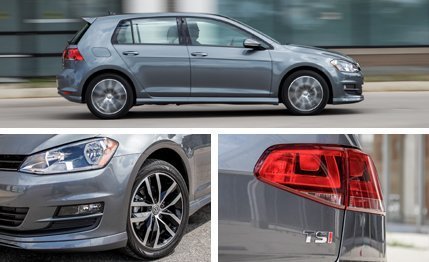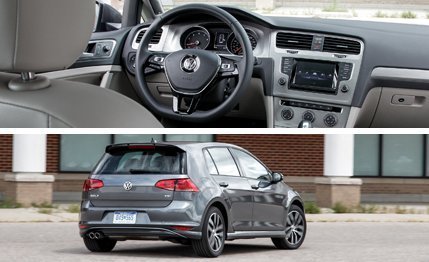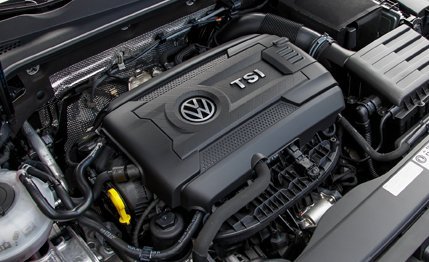 Instrumented Test
Instrumented Test
A good vehicle makes you think, “This car would’ve conquered the world five years ago.” Whereas a great car fosters this thought: “In five years time, this will still be a great car.” After a week with this Golf, we’d say it falls into the latter group.
The Golf’s greatness doesn’t come from a lustful place. Walking past a new Golf in a parking lot won’t trigger any long, envious glances. It barely looks redone. Even in its seventh generation, the Golf remains very much a box with windows.

Not to imply that the Golf isn’t new; it shares almost nothing with its predecessor. The wheelbase is up 2.3 inches, length grows by 2.1 inches, width is up a half-inch, and the roof is 1.0 inch lower. The body is more aerodynamic now, but the only obvious changes are slimmer lights, a small sail window near the A-pillar, and a crease that runs through the doors.
This Golf flows. Even a short drive reveals a seamless consistency of feel and a solidity that transcends cars in the Golf’s price bracket. The steering weight is on the light side, but the leather-wrapped rim feels alert. Impact forces traveling through the suspension don’t seem to register in the cabin. It’s as if Volkswagen made a hatchback out of an S-class.
 It might not look overhauled, but the 2015 Golf most assuredly is, riding on the new and lighter corporate MQB components set.
It might not look overhauled, but the 2015 Golf most assuredly is, riding on the new and lighter corporate MQB components set.
If the structure is Benz-like, the interior is Audi-grade. A simple, rectilinear design cants the center stack toward the driver, and the instrument panel is clad in soft plastics with fine graining. Every component fits together with the precision of Mayan stones and gives the impression that the car will endure as long.
Even when pinned to the floor and spun toward the redline, the Golf’s turbocharged 1.8-liter four stays calm, emitting a deep whir. Introduced on the Jetta and Passat last year, the direct-injected 1.8-liter produces 170 horsepower and 200 pound-feet of torque. Turbo lag is minimal and the six-speed automatic shifts smoothly, but the gearbox can be slow to engage from a stop or a slow roll.

Acceleration times for this fully loaded 3135-pound Golf were unimpressive at 7.7 seconds to 60 mph and 15.9 in the quarter-mile. A Jetta with the same powertrain did the 60-mph hustle in 7.3 seconds; a manual Golf with the 1.8-liter sprinted to 60 in 6.8. The Golf doesn’t feel slow, though, as a low 1600-rpm torque peak gives it a nice shove in traffic. In C/D driving, which is similar to the way you might drive a rental car with prepaid gas, the Golf managed 26 mpg.
Base prices for a five-door Golf automatic begin at $21,515, but our test car’s Sport trim level brought the cost up to $26,775. Sport versions come with a body kit, 17-inch wheels, a rearview camera, a Fender audio system, and a large sunroof. It’s possible to pile on options to create a $30,000 Golf, but we’d advise against that. Even without the optional extras, the refined and comforting demeanor of a luxury car remains. There are larger cars you can buy for the same money, but they aren’t any better appointed or more refined. And that’s something we might still be saying five years from now.